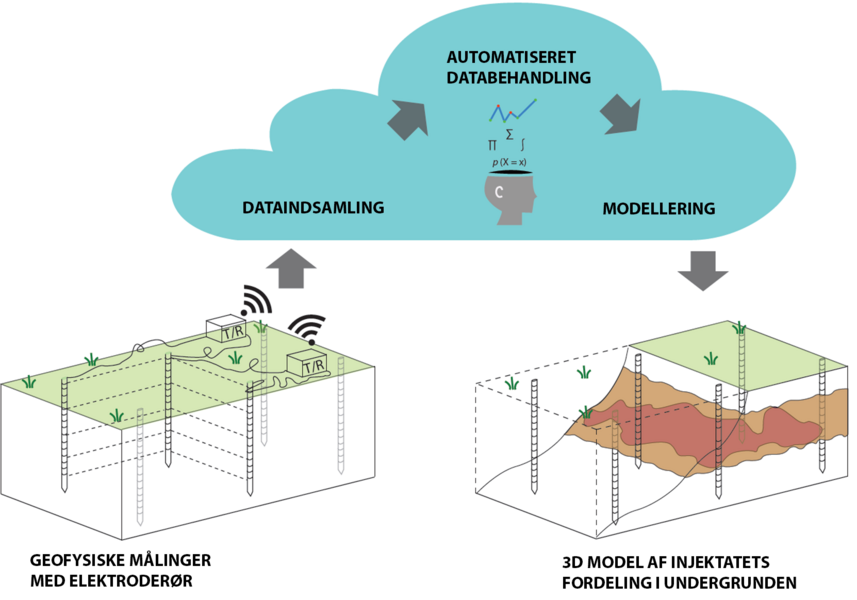Signal processing to improve remediation of oil-contaminated soil
By measuring the electrical conductivity of the soil, researchers from Aarhus University, in collaboration with Ejlskov A/S, are developing an inexpensive and accurate method of tackling oil pollution. The project is being supported with DKK 17 million from Innovation Fund Denmark's Grand Solutions.


In Denmark and in the rest of the world, landowners and government agencies and institutions are facing major challenges to remediate contaminated sites after oil spills. For decades, remediation has entailed very high costs because the toxic soil must be removed and landfilled. However, today, biological remediation methods are so effective that it isn’t necessary to remove the soil, and instead the contaminated area is merely treated with bacteria.
"This has some obvious advantages. You save time, money and energy, and you don't need to tear down buildings or installations or stop activities on the site. This means it’s possible to remediate efficiently and immediately the oil spill is discovered," says Jakob Juul Larsen, associate professor at the Department of Engineering, Aarhus University.
He is working with the company Ejlskov A/S, who are experts at bacterial remediation of contaminated soil. They are working with a remediation agent based on bacteria and coal, which can be injected into the subsurface and then contain and break down the contamination.
3D map of the flow of bacteria in the soil
The problem is that the method is not very accurate. Today, the soil is over-treated to be on the safe side, but we don't really know how the bacterial mixture is spreading in the soil.
"We want to develop a technology that can supplement the documentation for soil remediation we obtain by taking samples of soil from the contaminated area. By systematically monitoring the spread of the bacterial mixture in the subsurface, we can give the landowner a guarantee that all the oil has been contained, and we can apply the treatment dosage more accurately," says Jakob Juul Larsen.
And the key to achieving this detailed overview of the bacteria's containment of oil contaminated soil is signal processing.
The researchers' plan is to develop special pipes with electrodes that can be drilled into the subsurface. A current will then be passed between the pipes, and changes in the soil’s conductivity will provide a detailed 3D map of how the bacteria have spread.
"This will allow us to determine exactly how the fluid with the bacterial remediation agent is flowing, and where we need to add more. Obviously signal processing requires thorough preparation so that we get a totally pure signal," says Jakob Juul Jensen.
Over the years to come he will be developing machine learning techniques to make it possible for a computer to measure accurately the soil's conductivity.
The project team, which also includes the Department of Geoscience, Aarhus University and the Airborne Instruments company, expects that the technology to monitor bacterial remediation of oil-contaminated soil can be commercialised within a few years, and that it will result in significant environmental improvements.
"Of course, our dream is to boost a development globally whereby it becomes much easier and much cheaper to remediate toxic soil and thus prevent oil from peculating down into the groundwater," says Jakob Juul Larsen.
